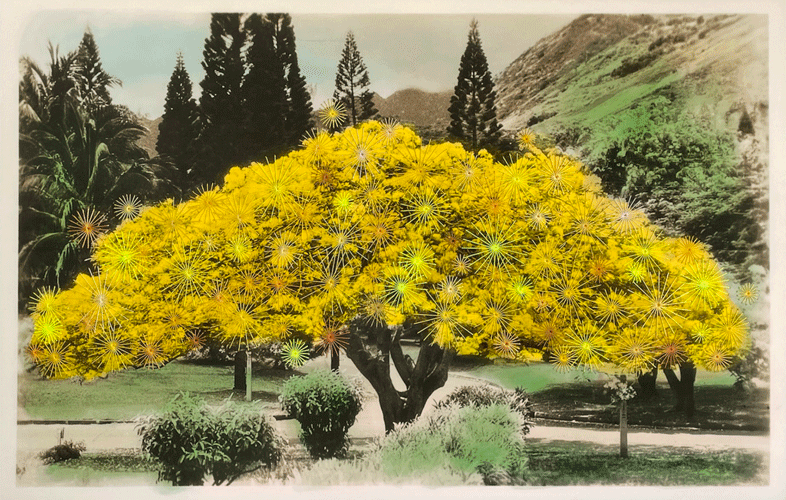Hopstreet Gallery is pleased to present Julie Cockburn’s second solo exhibition at the gallery.
Cockburn is well-known for her altered found photographs, immaculately crafted with hand embroidery, using a graphic visual language to bring the displaced photographs from their past into the present.
In ‘Same but Different’, Cockburn continues to add to the ongoing series she has been working on for decades, revisiting her motifs of dancing dots, masks, and concentric circles, exploring themes of similarity both within each series and within the individual works themselves. Those themes include generic landscapes, formal portraits and full body poses. “I’m on a quest for perfection in the execution I guess,” she says, “Using repetition and precision in order to articulate more clearly something inside me that I’m forever attempting to make manifest”.
The found images Cockburn chooses share crucial similarities within their groupings. The new ‘Flare’ landscape series, for example, uses a suite of found amateur landscape photographs, some under-exposed, some double-printed, to which Cockburn adds playful, ombré, suspended balloons of colour, giving the photographs depth of field and a magical, will-o-the-wisp quality. In ‘Yin’ and ‘Yang’, Cockburn sourced two identical photographs of an unknown, mid-century sitter. In an exercise to highlight the human condition, Cockburn has stitched a series of shapes, identical in position but different in colour and hue. This subtly shifted similarity accentuates the everchanging thoughts and emotions we all feel on a moment to moment, day to day basis.
‘Drawing – Gamut 1970-2023’, a looped video imperceptibly changing colour over a few minutes is derived from one of Cockburn’s own childhood drawings. It highlights the tricks time plays with our perception, and how difficult it is to see things when we are too close to them.
Cockburn hints at Derrida’s ‘La Différance’ when she talks about her interventions. “I suppose I’m trying to highlight everyone’s individual reaction and feelings when looking at a photograph by making my own responses visible on the surface, using a very personal and carefully honed visual language. I use the idiosyncrasies of each photo as my inspiration – the colour, posture, patina, format and composition – and I grab the ‘feeling’ they instil in me as a guide to the pattern I impose.” Indeed, graphic intervention is a hallmark in the lexicon of Cockburn’s response to the narrative in each found image. The two large scale embroidered trees, ‘Tree – Red’ and ‘Tree – Yellow’, again derived from a single photograph, emphasise on the surface the individual a subtle meanings that we all bring to looking at an image.

